In 2016, a humble Volkswagen Golf GTI came runner-up to a Porsche 911 R in EVO magazine’s Car of the Year shootout. Yet just 12 years earlier, the GTI seemed to be heading for extinction. The Golf GTI Clubsport S, which had just set the Nurburgring front-wheel-drive lap record, had beaten the best from McLaren, Aston Martin, Lamborghini, Mercedes-AMG and BMW M. Where did it all go right?
The Mk1 Golf GTI of 1976, while not the first, had reinforced the mould for the hot hatchback. Seven years later, the Mk2 took the basic formula and refined it, attending to numerous issues such as the brakes – no longer compromised by a half-hearted conversion to right-hand drive. In 1986, a zesty 139hp 16v version, which relished sorties to the upper reaches of the rev counter, joined the hardy 112hp 8v GTI, finally providing the exhilarating motor the chassis deserved.
By the late 1980s, the GTI had established itself as one of the most desirable cars on the road, practical enough for the school run, but still capable of setting pulses racing on the open road.
GTI in the doldrums
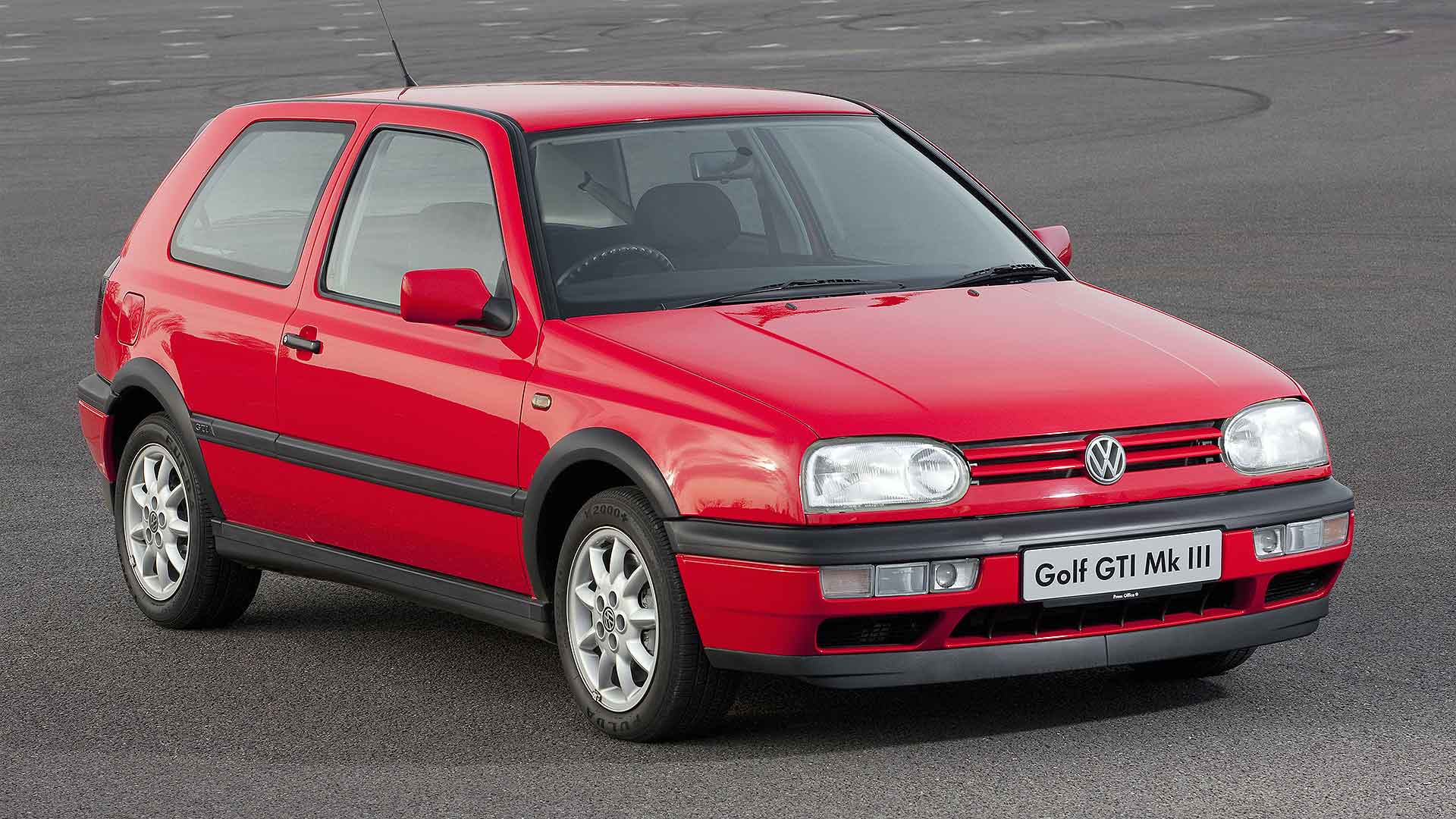
When the third generation (pictured above) arrived in 1992, all it had to do was capitalise on the solid foundations of what went before. Dead easy, right? Wrong. The GTI’s difficult third album went somewhat off-key thanks to legislation forcing manufacturers to incorporate catalytic converters, airbags and better crash protection.
All this made cars more expensive to build and heavier. With no budget for significant changes to the GTI’s engine, the only model available for the first two years was the 115hp 8v, which was bored out to 2.0 litres and gained a measly 3hp. This equated to a 20hp drop in power-to-weight ratio versus the featherweight Mk1, while the longer stroke and catalyst had the unfortunate effect of reducing its willingness to rev. Not even the 1.8’s gutsy enthusiasm remained.
A 150hp 2.0 16v version arrived in 1994, but the game had moved on. Shortly afterwards, the Peugeot 306 GTI-6 blew the Golf into the weeds with its playful chassis, six-speed gearbox (a genuine novelty in those days) and eager 170hp at 6,500rpm.
Holding on for a hero
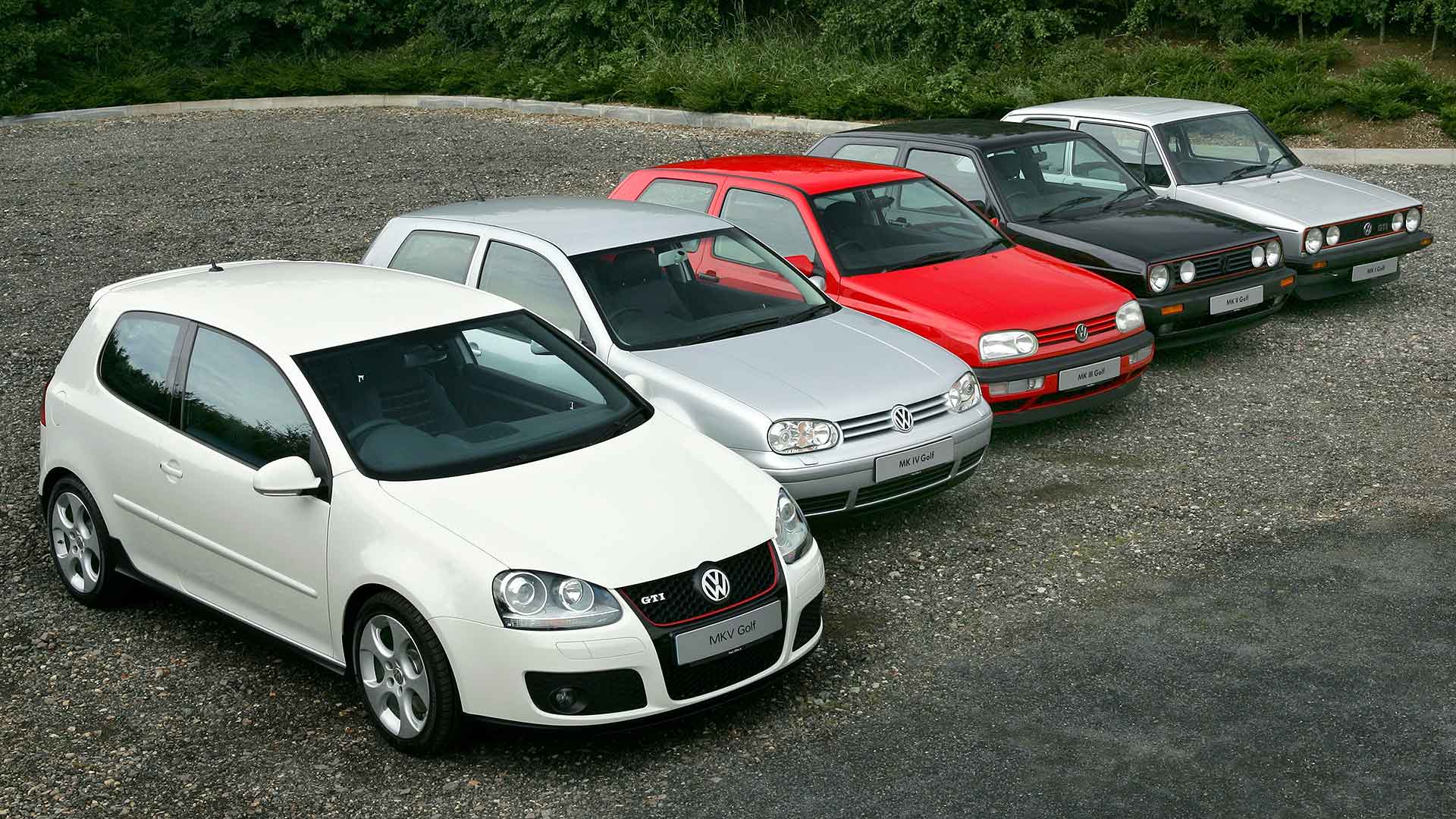
Surely the completely revised Mk4 generation launched in 1998 would right those wrongs? Hardly. Once again, two flavours of GTI were offered. The entry-level 125hp version boasted a normally aspirated take on Audi’s high-tech 1.8 20v engine. While pleasant enough to work hard, though, it was just too gutless in the heavy GTI. This was soon replaced by a more tractable 2.0 8v version – but with power back down to just 115hp and a 0-60mph time north of 10 seconds, it was even less deserving of those hallowed three letters.
Even the top-dog 1.8T, with its 150hp turbocharged 20v engine, felt like an opportunity missed: a decent car, but more tepid than hot. A stodgy chassis and five long gears didn’t help its cause one bit.
In 2003, a 180hp six-speed GTI joined the range, but it was too little too late by that point. And let’s not even mention the GTI diesel… To undermine the GTI even more, the all-wheel-drive Golf R32 had stolen the limelight in 2002 with its snarling 240hp V6, aggressive styling and up-for-it chassis, creating a new uber-Golf category all its own. The GTI was dead. Or so we thought.
Like a bolt from the blue, the Mk5 Golf GTI came out fighting in late 2004, determined to snatch back the family jewels while simultaneously flicking vees to the needlessly complicated R32. Already the cooking versions of the Mk5 Golf had impressed with an agile chassis, courtesy of fully independent rear suspension, a first for a front-wheel-drive Golf. Taking heed of the Mk1 Ford Focus’ democratisation of fine handling, VW systematically head-hunted its development team to work on the Golf – and what a wise investment that would prove to be.
I am the resurrection
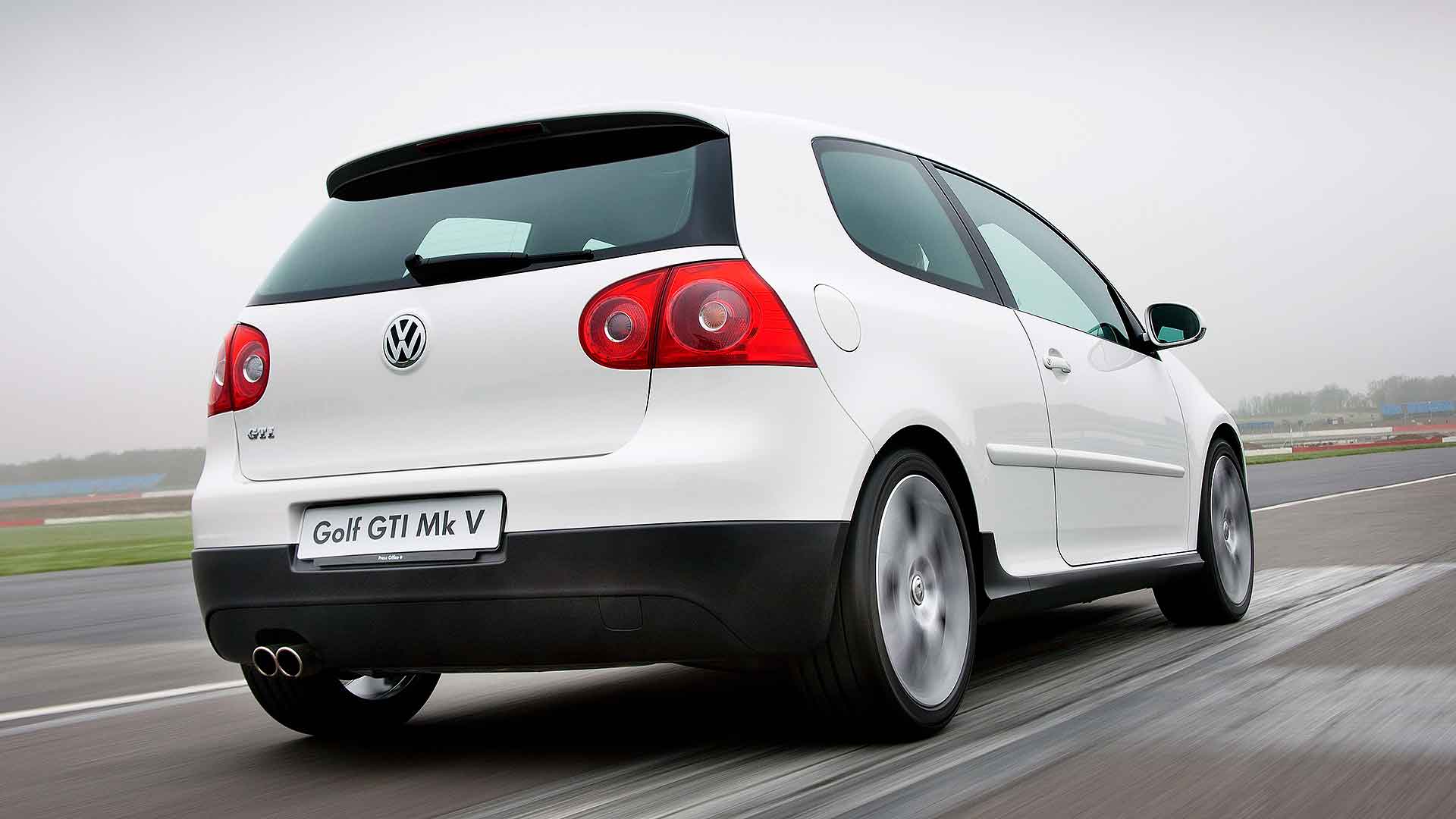
At last, the GTI had a class-leading chassis, and its engine was a stonker. The ‘EA113’ 1,984cc 16-valve turbocharged four-cylinder produced a modest 197hp (a year later it was outgunned to the tune of 24hp by the Focus ST), but this didn’t matter because its torque-rich delivery and enthusiasm to rev, coupled with relative fuel efficiency, were exactly what a GTI needed. It deftly recaptured the Jekyll-and-Hyde nature of the iconic original, while dragging it firmly into the 21st century. To everyone’s surprise, the GTI was well and truly back.
A slick six-speed manual gearbox with ratios perfectly spaced to keep things on the boil was joined by a twin-clutch DSG automatic, boasting steering wheel-mounted paddle shifters and distinctive over-run pops. Both were excellent and while the manual remained the preferred choice for purists, the self-shifter compounded the GTI’s dual personality and helped it reach a new audience.
Importantly, the GTI also looked great. With the Mk4 version, VW had completely forgotten that a GTI should stand out from the rest of the range. A key sign of how far the mission had crept was the use of wood-effect inlays in the 1.8T model. What were they thinking? The limited edition Mk4 GTI Anniversary of 2002 showed not everyone at Wolfsburg was ignoring the glory days, with its special BBS wheels, red brake calipers, red pinstriped Recaro seats and brushed aluminium trim – and thankfully a similar degree of retro pastiche adorned the Mk5 GTI.
Go-faster stripes
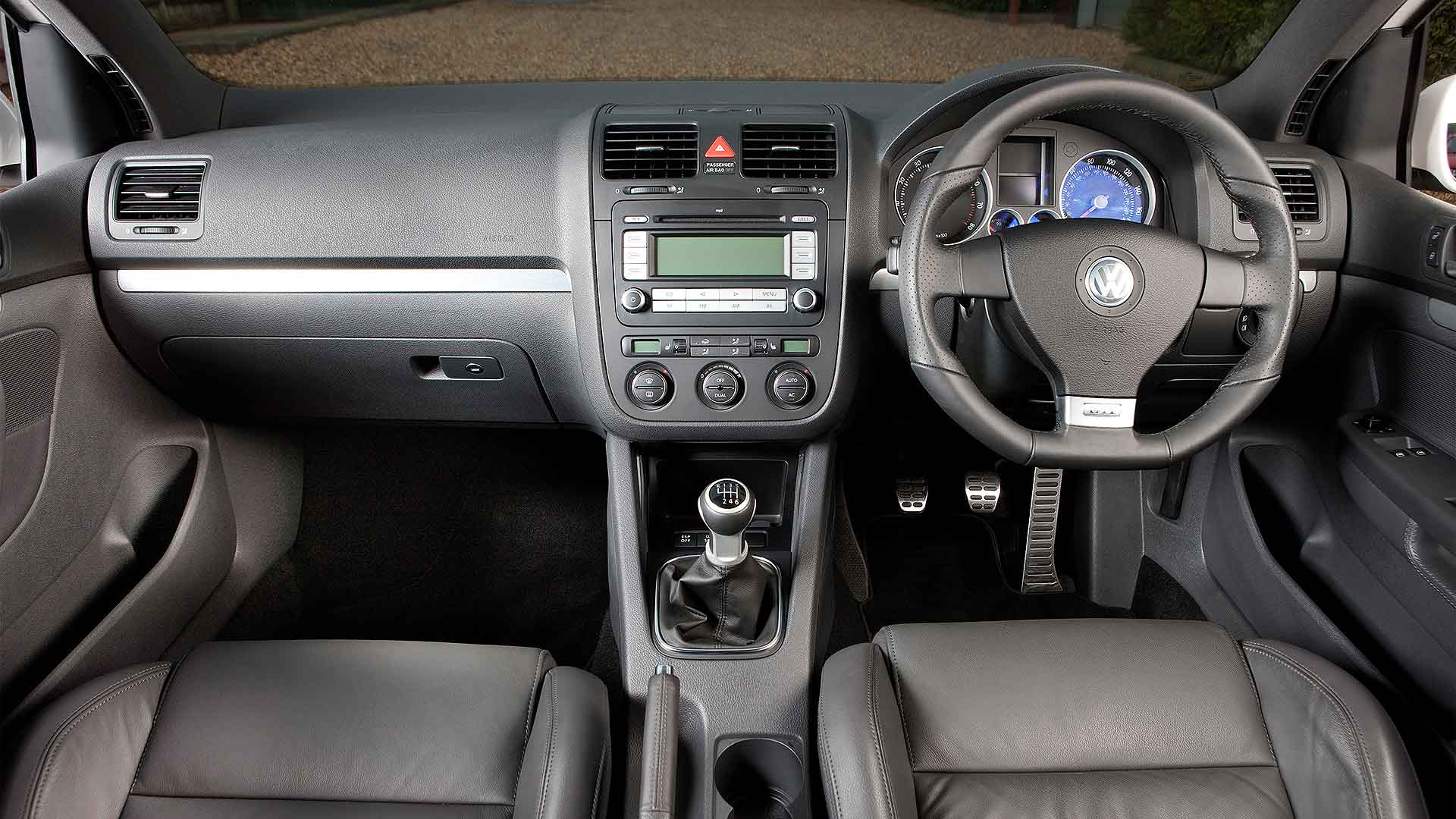
Tartan seat fabric and a red grille pinstripe, key GTI identifiers that both debuted on the Mk1, made a long overdue return, and combined with a unique front bumper and gaping honeycomb grille, the GTI stood out without being OTT. It was this happy medium that made the original so popular and Volkswagen had hit the bullseye once again, with the Mk5 becoming the must-have car of 2005. VW even retained now-fashionable white paint as an exclusive GTI option at first, forging a link between the new car and earlier versions, many of which were also white.
Driving a Mk5 today, the first thing that strikes you is how little the basic driving experience has evolved when compared to the decade-newer Mk7. That’s not to criticise the young pretender, which has sympathetically evolved the Mk5’s recipe, making it faster, safer and cleaner, while still being a hoot to drive. But the Mk5 was so good to start with, in terms of fun it would be hard to improve upon.
The common feel is no surprise when you learn that Volkswagen’s head of chassis tuning, Kartsen Schebsdat, one of the original Focus development team tempted to Wolfsburg, was responsible for both generations. In between the GTIs, he also helped develop the Porsche 911 GT2 RS which, while in a totally different league, must have felt like a walk in the park after turning around the GTI’s fortunes.
Five comes alive
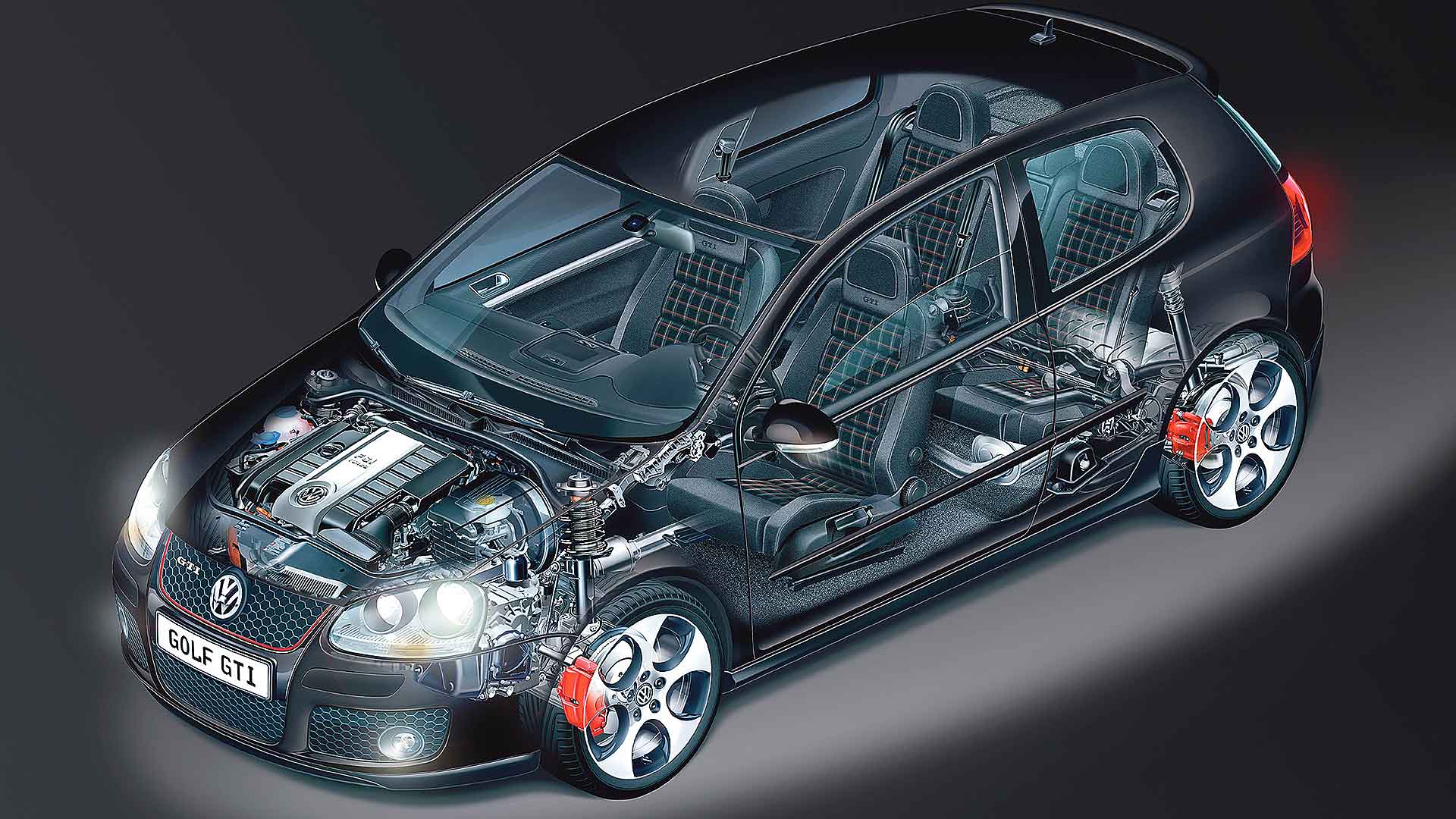
As you install yourself behind the chunky leather flat-bottom steering wheel, everything just feels so right. This is probably to be expected, as the Golf didn’t become Europe’s best seller for nothing, but perfect ergonomics are not something you can take for granted with every hot hatchback. Admittedly, perceived interior quality took a step backwards, with an elephant’s hind-quarters offering inspiration for the acres of grey plastic on the dashboard and door cards, but it’s all very well assembled, as the well-used 15-year-old example I’m driving confirms. The retro plaid sports seats with their triangular bolsters offer girdle-like support, ratcheting low enough for a sporty driving position.
Twist the flip-key a few degrees and the engine fires up crisply, settling to a smooth idle with a pleasing old-school resonance from the twin tailpipes. Press the alloy-trimmed left pedal, select first gear, then engage the perfectly weighted hydraulic clutch and listen for the distinctive ‘dugga-dugga’ chuntering from the flywheel as the very natural biting point is found. The drive-by-wire throttle, operated via a Porsche-style floor-mounted pedal, also feels nicely weighted and evenly mapped, allowing the 1,984cc engine’s performance to be dispensed accurately, and rendering any (thankfully absent) sport mode redundant.
Carefully manage the throttle in the lower gears, especially in the wet, to avoid overpowering the relatively modest 225-section tyres and by third you will have noticed the often sticky and recalcitrant change of the Mk4 is long gone, a beautifully slick and mechanical action having taken up residence beneath the alloy and leather (but sadly not golf ball-shaped) gearknob.
Open the taps fully and, after just a smidgen of lag, at 2,500rpm it really gets into its stride, hurling itself at the 6,500rpm redline with an endearingly gruff four-cylinder growl, just like the GTI 16v of yore. Unlike the older car, however, this isn’t at the expense of mid-range response, the turbocharger dispensing plenty of torque. A 0-60mph time of 6.7 seconds may sound leisurely today, but bear in mind a whole 10 years later the non-Performance Pack Mk7 GTI only bested this by 0.2 seconds, with emissions regulations clearly hampering progress in the intervening years.
Light on its feet
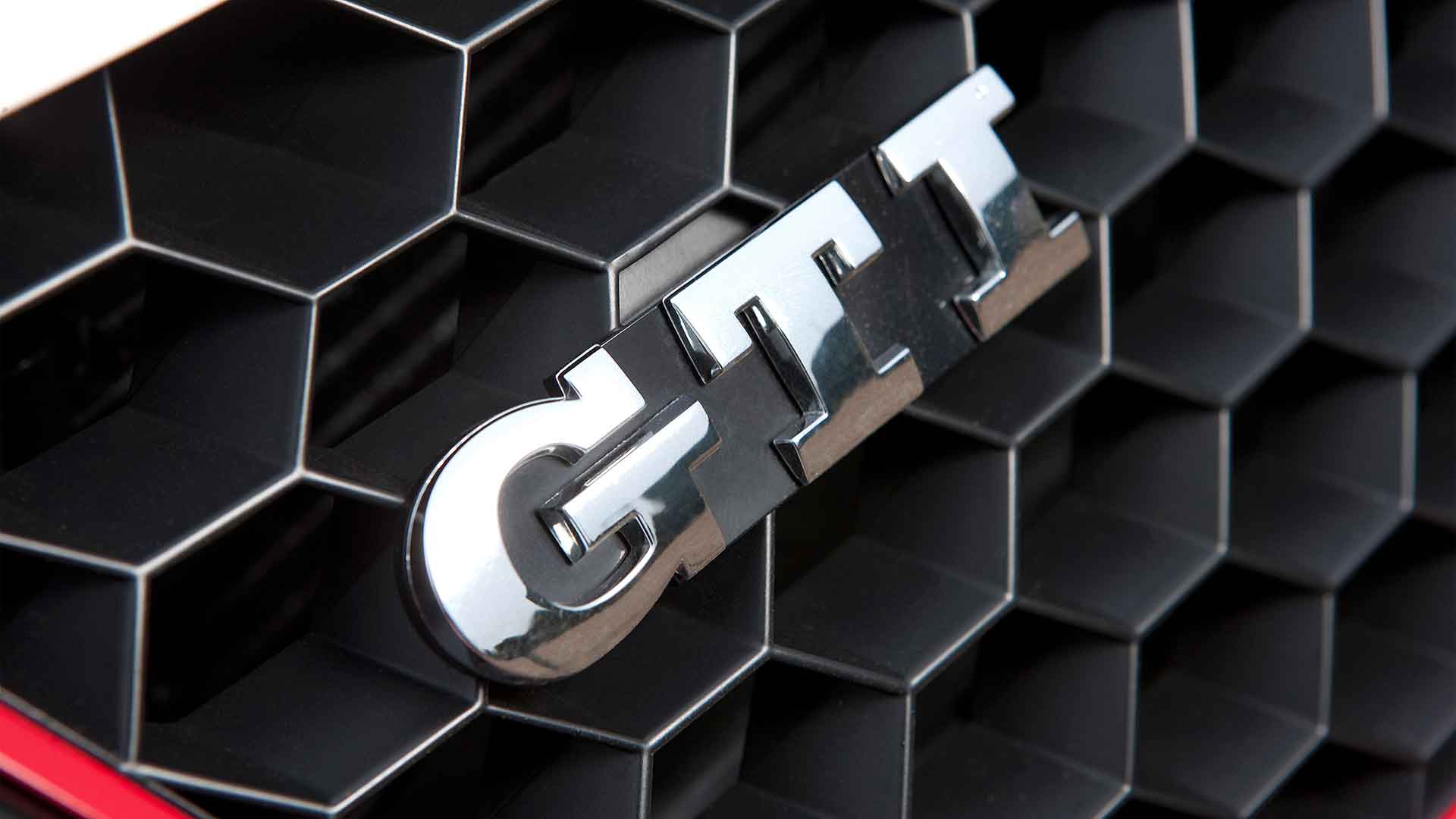
While deeply impressive, though, it’s not this engine that defines the Mk5 GTI. It’s the car’s chassis. VW finally mastered the black art of suspension tuning and at last had a car to take on rivals from Renault, Ford and Honda. Show it a corner and the steering wheel maintains the reassuring degree of heft, with sufficient feedback to breed confidence in all conditions. Guide the GTI into a sweeper at the kind of speed your brain says you really shouldn’t and it remains totally planted, with just a gentle push into understeer if over-ambition tests the front tyres’ tenacity. Still, a gentle lift quickly resolves this, thanks to the car’s inherent adjustability.
Then it’s a question of waiting for the perfect time to start bleeding the throttle back in. Impatient drivers hoofing it with too much lock applied will find the 207lb ft of torque – dispensed from just 1,800rpm – quickly overpowers the front tyres. But time it just-so and the GTI hooks up cleanly, firing itself out of the corner like a rabbit chasing a greyhound, tyres overspeeding barely perceptibly. It’s this constant process of calculating the amount of throttle the constantly varying grip levels can take that makes for such an addictively interactive experience. It’s key to what makes the Mk5 so special, and so much more engaging than its direct predecessor.
The four-link rear suspension unlocked the GTI’s transformation from handling dullard to wizard. In contrast to the torsion beam setup that had underpinned the rear end of the GTI from day one, engineers could find that sweet balance of agile handling without ruining ride quality, a much harder task on a heavier modern car like the Mk5 Golf, which tipped the scales at 1,328kg – more than 50 percent more than the original. This meant the new GTI was equally at home on a smooth circuit or rutted British B-road, particularly when shod with standard 17-inch wheels. Its uncanny fitness for purpose on our crumbling highways should come as no surprise; prototypes were dispatched to the UK to tune the car specifically for one of its biggest markets.
Best of the breed
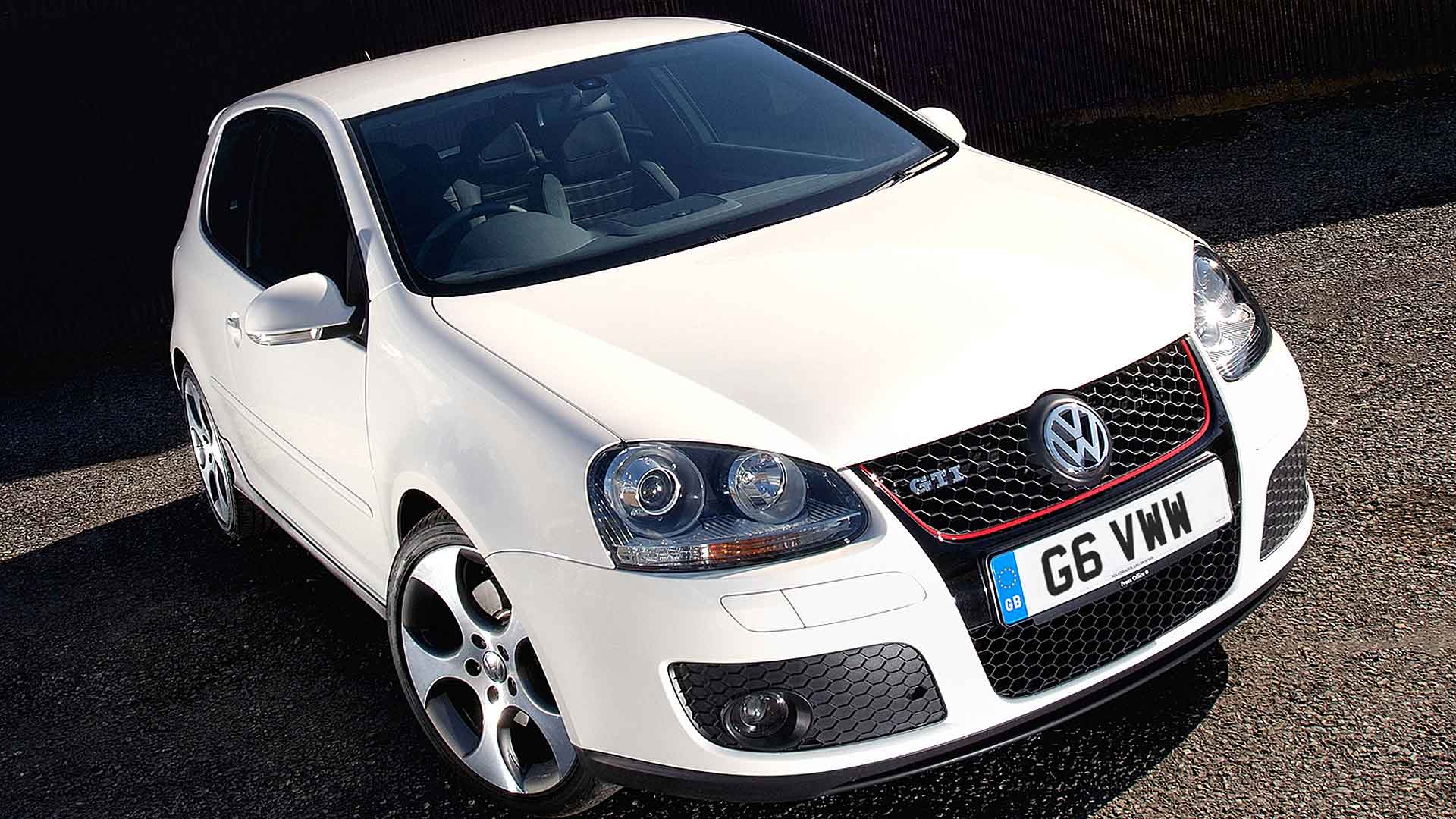
A second-generation ESP traction and stability control system was standard and is pleasingly subtle in its intervention, with just a gentle popping from the exhaust system as fuelling is cut, and a flickering orange warning light when the limits of traction are breached. For track use, this can be largely deactivated, leaving just stability control to mop up big moments.
Bright red brake callipers also made a welcome return, grasping 312mm vented discs up-front and solid 286mm discs at the rear with a 16-inch brake servo, up from the 10-inch item on lesser models. Feel was superb and while nothing special, they were perfectly good for road use, if a little undernourished for a track-day pounding.
While what constitutes the best GTI is an argument that can rattle on indefinitely, for driving enjoyment, and excluding any limited editions, the Mk5 comes top for us. Not only is it great fun, it brought the GTI back from the brink, laying a solid foundation for the future. With the GTI now into its eighth generation, we have a lot to thank it for.
Andrew Chapple is the founder of Volkswizard
ALSO READ:
Classic Golf GTIs: driving Volkswagen’s hot hatch heroes



[…] family have made their way to a campsite – helpfully taking the tent and luggage in our VW Golf – and I simply need to drive there and meet them. Via the scenic route, of […]
[…] Honda Civic Type R (EP3) and Volkswagen Golf GTI (Mk5) made the best use of 200hp, while the Renault Sport Megane R26.R provided the proof that more […]
[…] and an institution that deserves to be carefully curated. As a serial owner – including the 2006 Mk5 GTI that serves as our family runaround – I desperately hope this new, eighth-generation car is […]
[…] arrive at Gridserve and, rather sheepishly, park my petrol-powered VW Golf around the back. Drivers of non-electric cars are also free to use the facilities, I am later told. […]
[…] chassis and yet more weight. It was a low-point, the ‘Phantom Menace’ of the GTI saga. When the 2004 Mk5 GTI finally returned the car to its roots, enthusiasts the world over gave a collective sigh of […]
[…] hasn’t tampered with a winning formula for the eighth-generation Golf GTI. Traditionalists will be relieved to hear the red stripes and tartan trim are still present and […]